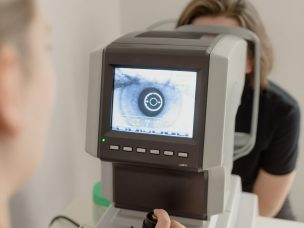Hyperreflective foci indicate progression risk in cases of advanced age-related macular degeneration (AMD) and are partially attributable to ectopic retinal pigment epithelium (RPE). In this study, published in Investigative Ophthalmology & Visual Science, the authors hypothesized that ectopic RPE is molecularly distinct from in-layer RPE cells and has a cross-retinal course that follows Müller glia.
The study used data from 61 eyes and 44 patients with AMD. Of these eyes, 20 were characterized by ex vivo optical coherence tomography (OCT) and analyzed by histology. Cryosections were stained with antibodies to retinoid and immune markers and were assessed for immunoreactivity.
Ultimately, the researchers found that RPE plume and cellular debris trajectories followed Müller glia. RPE corresponding to hyperreflective foci lost immunoreactivity for retinoid markers and gained immunoreactivity for immune markers. Moreover, in-layer RPE cells exhibited aberrant immunoreactivity, which extended to all abnormal phenotypes.
The researchers concluded that hyperreflective foci are indicators, not predictors of overall AMD disease activity. In addition, both gain of function and loss of function begin with in-layer RPE cells and extend to all abnormal phenotypes. The researchers suggested that these findings can be used to facilitate new biomarkers and treatment strategies for AMD [1].
Source:
[1] Cao, D., Leong, B., Messinger, J. D., Kar, D., Ach, T., Yannuzzi, L. A., Freund, K. B., & Curcio, C. A. (2021). Hyperreflective foci, optical coherence tomography progression indicators in age-related macular degeneration, include transdifferentiated retinal pigment epithelium. Investigative Opthalmology & Visual Science, 62(10), 34. https://doi.org/10.1167/iovs.62.10.34










